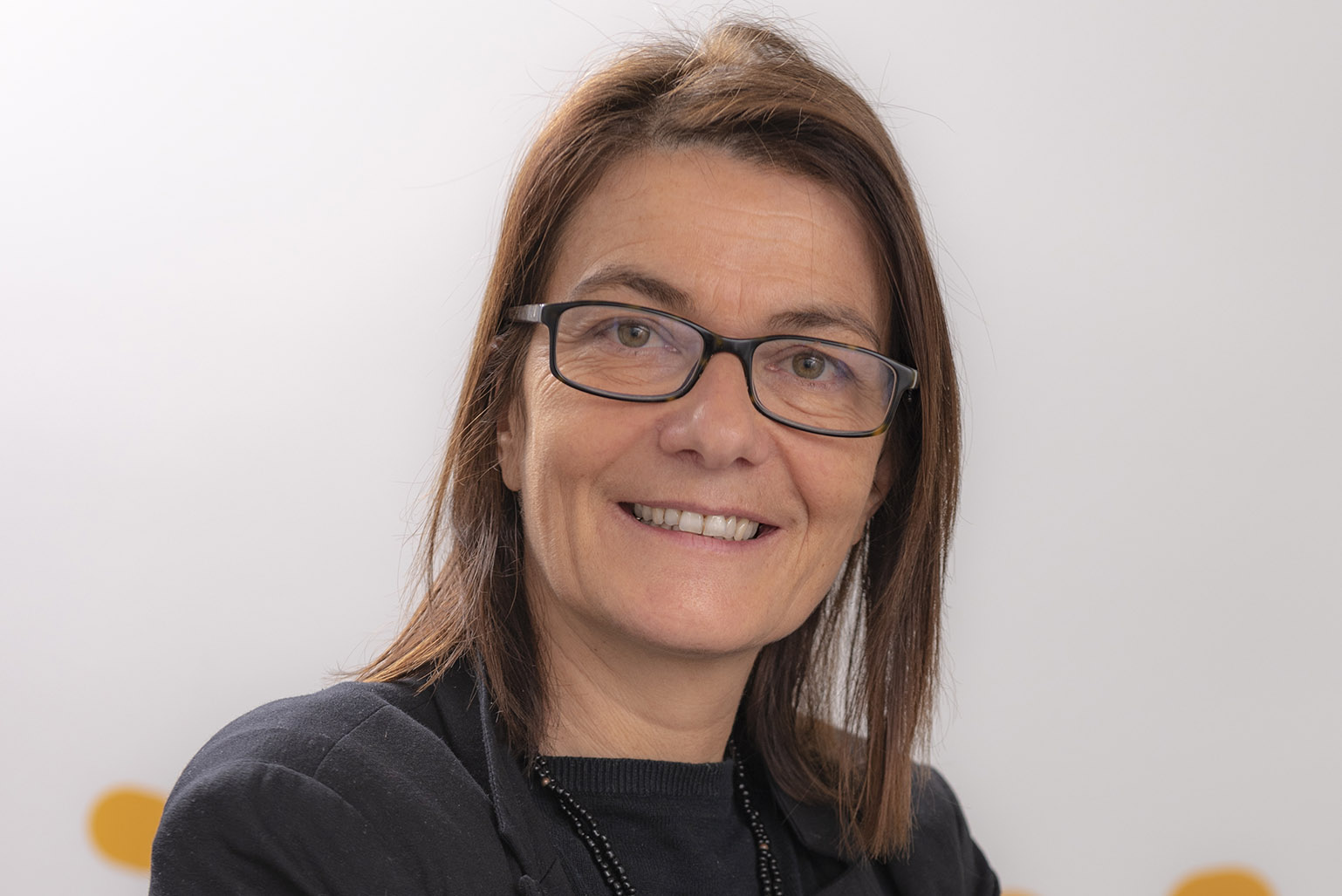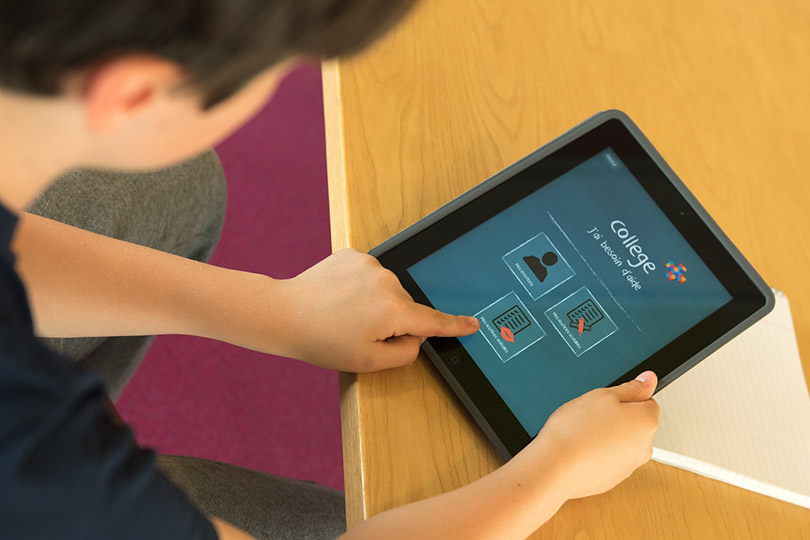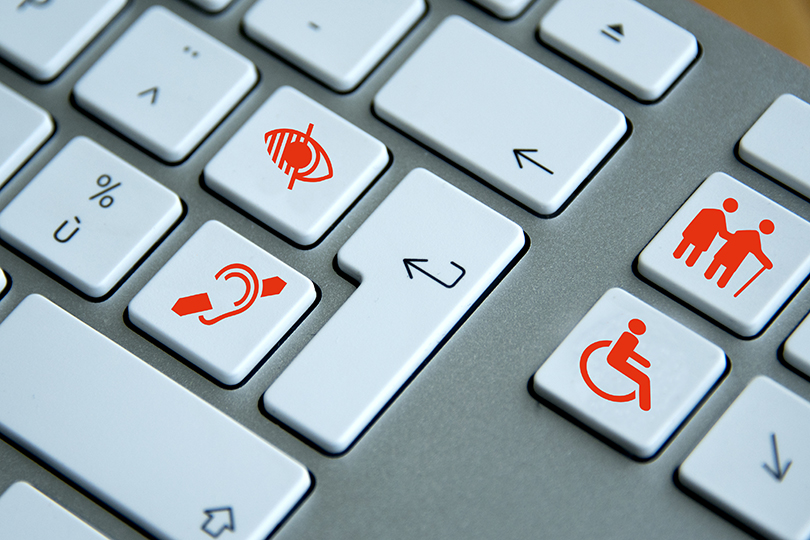
Hélène was interested in a new approach to aging, her aim being to show that aging corresponds to trajectories that must be interpreted both dynamically and developmentally. This would involve studying people from an early age, analysing the links between the processes which are established, those which decline and those which develop over an individual’s lifetime.
From clinical study to rehabilitation technology - developing synergy between the human sciences and the digital sciences
Despite her enthusiasm for her research, Hélène began to feel she was reaching the limits of the fundamental approaches to psychology. Although she was making progress from a scientific perspective, she began asking herself how meaningful her research actually was, and what impact it was really having on people’s lives. The more she thought about this, the more she was drawn to virtual reality.
Verbatim
Would I not end up with more tangible results if I was able to simulate activities from people’s daily lives ? Would that not be of more benefit to the elderly ?
In 2008, Hélène Sauzéon began working with Pascal Guitton, professor of IT and head of the IPARLA project team at the Inria Bordeaux Sud-Ouest Research Centre, where she got her first taste of the world of IT research. Her aim was to employ the use of virtual reality in order to develop alternatives and navigation aids for use in urban environments. Her research was focused on spatial navigation and spatial memory difficulties in the elderly or people with brain damage.
In 2012, at a seminar on assistance for people with cognitive impairments, she met Charles Consel, and discovered the research work the PHOENIX project team was carrying out. In keeping with the focus of her research into aging, she worked alongside Charles Consel to help set up DomAssist, a software platform for connected objects that can be used to monitor an elderly individual’s daily activities, and which provides assistance with carrying out tasks at home.
All too often, digital assistance devices are designed without taking users’ psychological or sociological constraints into account. To resolve this issue, Hélène Sauzéon took advantage of the complementarity between the two disciplines, providing a unique perspective and methodological expertise with regard to the relevant human factors, particularly aging and cognitive impairment. Her background in psychology enabled her to determine the target more effectively, to analyse needs and to work with stakeholders to devise new digital devices for evaluative purposes or for use in rehabilitation (compensation or assistance). Central to her research was the creation of original devices that would be acceptable, easy to use (with a low cognitive or physical load in terms of interaction) and, most importantly, which would motivate individuals and be useful to them, with a view towards long-term use. The research carried out was multidisciplinary, blending computer science, psychology and cognitive ergonomics, factoring in individual capacities. Its overarching objective was to help make society more inclusive with regard to the elderly and individuals suffering from cognitive impairments.
A number of Inria research teams have benefited from Hélène Sauzéon’s expertise. In 2016, she worked with POTIOC to develop the Aïana software which can be used to adapt the interface of a MOOC to users’ needs and capacities. Running parallel to this, she also worked with Pascal Guitton to develop a MOOC on digital accessibility, which led to more than 13,000 registrations on the FUN platform. An evaluation protocol demonstrated its efficiency for individuals with disabilities both in terms of ergonomics and from an educational perspective, revealing the enhanced feelings of self-reliance that stem from this sort of experience (making people feel more competent and autonomous when it comes to learning).
In addition to this, convinced of the crucial role played by motivation in learning, Hélène Sauzéon also worked with other Inria project teams, most notably FLOWERS (headed up by Pierre Yves Oudeyer), contributing towards the KidLearn and KidBreath projects. They drafted an evaluation protocol demonstrating the benefits of an intelligent tutorial system devised by Flowers that is used for the health education of young children with chronic asthma. This same system was successfully used with children with autism, helping them to acquire the ability to perform simple calculations (adding and subtracting).
Keen to investigate motivation and curiosity further, Hélène Sauzéon joined Flowers in 2018. This Inria project team specialises in artifical intelligence (AI) and independent learning, modelling cognitive development and learning in children through the mechanisms of curiosity. Despite increasing evidence of the beneficial role played by curiosity in learning mechanisms in children, very few studies have been conducted on the elderly. Returning to her early research into aging, Hélène Sauzéon has been conducting more detailed studies into the importance of curiosity mechanisms in lifelong learning.
Verbatim
I’ve been looking at basic studies in psychology and neuropsychology where the aim is to determine to what extent intrinsic motivation and curiosity act as vectors and levers for learning throughout an individual’s life or for people with disabilities.
This approach corresponds to a virtual reality project that the FLOWERS project team is working on, investigating the role played by curiosity in improving spatial memory in both the elderly and children, employing the use of different motivational objects for each generation.
Research applicability as a working principle
What motivates Hélène Sauzéon day-in, day-out is the diversity of collaborations within FLOWERS. This has enabled her to develop applied psycho-educational and rehabilitational studies, the results of which can easily be transferred over to private partners (companies, associations, etc.) and public partners (the educational authorities, hospitals, etc.). The aim is to invent new digital devices and to demonstrate the benefits for learning or rehabilitation. Contributions have been made from both the digital sciences and the social sciences :
Verbatim
What I find fascinating is that we all start out with our own knowledge and areas of interest, but then someone else gives us a different perspective, and we end up developing a much more comprehensive understanding of social progress in terms of the solutions on offer. That adds a real sense of motivation.
Having always sought to use digital innovations as a lever for the development of her sector, Hélène Sauzéon is flourishing in this dynamic environment, where the emphasis is very much on having a positive societal impact and where the benefits of working together are properly recognised.

